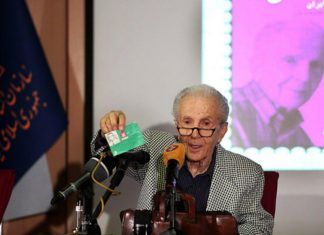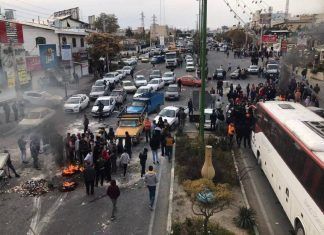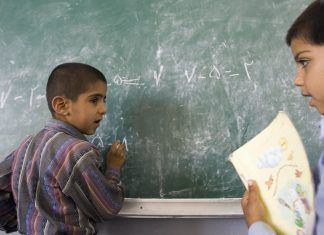Authorities in the city of Yazd, capital of the central Yazd province, have quarantined two tourists after they showed symptoms associated with the 2019 novel coronavirus (2019-nCoV) infection, Iran’s Minister of Health Doctor Saeed Namaki has said.
Dr. Namaki announced the news at a meeting with the faculty of the Tehran University of Medical Sciences (TUMS) late last month.
“Health authorities have quarantined a Chinese and a German national in Yazd,” Dr. Namaki was quoted by the Mehr News Agency as saying. “The novel coronavirus has only a five-day life span. The Chinese tourist, who arrived in Yazd 12 days ago, was hospitalized after complaining of a sore throat. We are also keeping a German national who had contacts with the Chinese tourist, under medical observation.”
“I have assured the head of the Cultural Heritage, Handicrafts and Tourism Organization of Iran (ICHTO) that the quarantine was only a precautionary measure and that these were not cases of coronavirus infections,” Namaki explained. “We must inform and educate the public about the symptoms of the disease. People should also limit physical contacts and maintain stricter hygiene.”
Minister Namaki has since written to the First Vice President Eshagh Jahangiri, urging the government “to suspend all flights from China to Iran,” the semi-official Fars news agency reported on January 31.
The Iranian Students News Agency (ISNA) reported on January 28 that to boost the country’s tourism industry, the ICHTO had launched a campaign promoting Iran as an ideal destination for holidaymakers to celebrate the Chinese New Year on January 25.
Speaking on the sidelines of a conference titled “Ancient Civilizations” in Beijing in November 2019, the head of the ICHTO, Ali Asghar Mounesan, said: “Some 150 million Chinese tourists travel abroad every year. Iran has taken steps to tap into this market, including a visa waiver program for Chinese citizens. The ICHTO has also created tours of historical and cultural sites for Chinese visitors.”
ISNA’s report also included comments by various Iranian officials on the possible global outbreak of coronavirus and travel restrictions to and from China.
“The Ministry of Health is monitoring the situation closely,” the deputy director of the ICHTO for tourism Vali Teymouri said. “The ministry will announce its plan to prevent an outbreak of the coronavirus.”
“Units from the Center for the Communicable Disease Control (CCDC) monitor flights from China that arrive at Tehran’s International Imam Khomeini Airport, and examine all passengers after they go through immigration and passport control,” the Spokesman for Iran Civil Aviation Organization Reza Jafarzadeh said. “They also screen all passengers on connecting flights from Tehran to other Iranian cities.”
[aesop_image img=”https://kayhanlife.com/wp-content/uploads/2020/02/VIRUS-CORONA9302.jpg” panorama=”off” credit=”FILE PHOTO: People wearing masks walk through an underground passage to the subway in Beijing, China January 21, 2020. REUTERS/Jason Lee” align=”center” lightbox=”off” captionsrc=”custom” captionposition=”left” revealfx=”off” overlay_revealfx=”off”]
“Visitors from China and Southeast Asia may not bring any food products into the country,” according to the Spokesman for the Ministry of Health and Medical Sciences Kiyanoush Jahanpour. “We have identified no cases of coronavirus infection in Iran so far.”
“We have found no cases of coronavirus infection in Iran so far,” the first deputy Health Minister Iraj Harirchi has assured the public. “This is a highly contagious virus that spreads quickly. It has, however, a lower death rate than many other viruses. Only a small percentage of those infected with coronavirus does not respond to treatment. People should not worry too much, and instead must take the same precautions they normally do to avoid catching a common cold or flu.”
Iran’s Minister of Interior Abdolreza Rahmani Fazli has also confirmed that health and port authorities have found no cases of coronavirus infection in the country so far. Mr. Fazli said that the government had “restricted flights to and from China.”
Meanwhile, a dispute has arisen between the Ministry of Health and Imam Khomeini Airport Town Company over footage posted on social media, which allegedly showed passengers being screened by airport staff upon arrival at the international terminal.
“The public relations department of the airport has given fake footage to the media as a proof that they are taking steps to tackle the problem,” the deputy Health Minister Alireza Raisi was quoted by ISNA as saying. “The video shows two workers at Imam Khomeini Airport, measuring the temperatures of passengers arriving from China. It was staged for the benefits of the Islamic Republic of Iran Broadcasting (IRIB) TV. The action in the video clip is not part of our medical protocol.”
“The woman in the video is a Port Health Authority inspector who has been working at Imam Khomeini Airport since 2011,” a statement by the Imam Khomeini Airport Town Company said. “Unfortunately, instead of praising the hard-working staffs at Imam Khomeini Airport, who have been in the forefront of efforts to control the spread of coronavirus, the deputy health minister has, incorrectly, questioned their work and described the video as a fake.”
Some 19,000 cases of the new coronavirus have been confirmed worldwide, most of them in China, since it emerged in December 2019. At least 361 people have died from the virus, mostly in Hubei, a landlocked central province in China. So far, 100 cases of the infection have been reported outside China in 22 countries.
The World Health Organization (WHO) has declared the outbreak of the new coronavirus as a global emergency.
“The main reason for this declaration is not what is happening in China but what is happening in other countries,” said WHO chief Tedros Adhanom Ghebreyesus.
A report by the WHO, released on January 31, said: “The Emergency Committee on the novel coronavirus, under the International Health Regulations (IHR 2005), was reconvened on January 30. The Committee believes that it is still possible to interrupt virus spread, provided that countries put in place robust measures to detect disease early, isolate and treat cases, trace contacts, and promote social distancing measures commensurate with the risk.”
Following the WHO’s announcement, many countries have restricted travel to and from China.
On January 31, the U.S. declared a public health emergency over the spread of the coronavirus. “The U.S. government would deny entry to any foreign nationals who have visited China in the past two weeks,” a statement by the U.S. State Department said. “Also, U.S. citizens returning from Hubei province will be quarantined for 14 days.”
Australia has also said it would refuse entry to all non-citizens arriving from China. Australian nationals coming from the country would be quarantined for two weeks.
Meanwhile, Two Chinese nationals from the same family have tested positive for coronavirus in York, in northeast England, authorities said on January 31. Public Health England (PHE) said it was making “good progress” in tracing people who have come into close contact with the pair. Subsequently, the UK government launched a public health campaign on February 2, which advises people to use tissues to catch a cough or sneeze and to wash their hands regularly to slow the spread of the new coronavirus.
The novel coronavirus was first identified in late 2019 in Wuhan, the capital of Hubei Province in China after several people who had developed pneumonia did not respond to the usual medical treatment.
Health organizations have now determined that the highly contagious virus is transmitted between people through physical contact, including sneezing and coughing. It has now spread to several countries across Europe, North America, and the Asia-Pacific.
According to a report by the Center for Disease Control and Prevention, the leading national health institute in the United States, it takes between two and 14 days after the exposure to the virus for the symptoms to develop which means an infected person can transmit the virus before showing any signs of being sick. The symptoms include fever, coughing, and breathing difficulties.
“There is no vaccine to prevent coronavirus infection. The best way to prevent infection is to avoid being exposed to this virus,” a health warning by the CDC said, “People infected with the new coronavirus should receive supportive care to help relieve symptoms. For severe cases, treatment should include care to support vital organ functions. People who think they may have been exposed to should contact your healthcare provider immediately.”
The statement by the CDC lists measures that would help to prevent the spread of respiratory viruses which includes:
- Wash your hands often with soap and water for at least 20 seconds. Use an alcohol-based hand sanitizer that contains at least 60 percent alcohol if soap and water are not available.
- Avoid touching your eyes, nose, and mouth with unwashed hands.
- Avoid close contact with people who are sick.
- Stay home when you are sick.
- Cover your cough or sneeze with a tissue, then throw the tissue in the trash.
- Clean and disinfect frequently touched objects and surfaces.
These are everyday habits that can help prevent the spread of several viruses.
[Translated from Persian by Fardine Hamidi]






GREAT INFORMATIONS VERY USEFULL.
THANKS.
SHOHREH KALALI